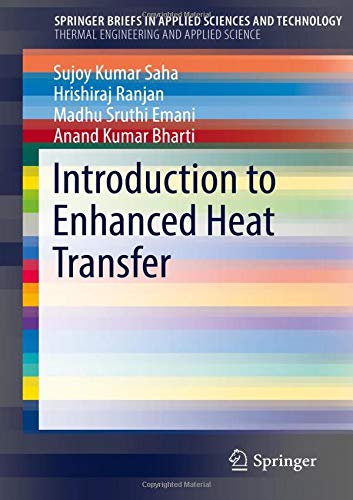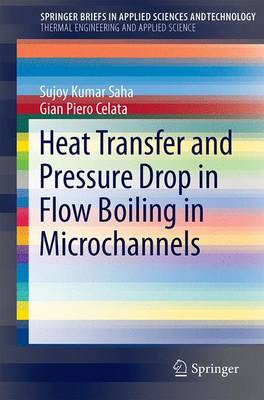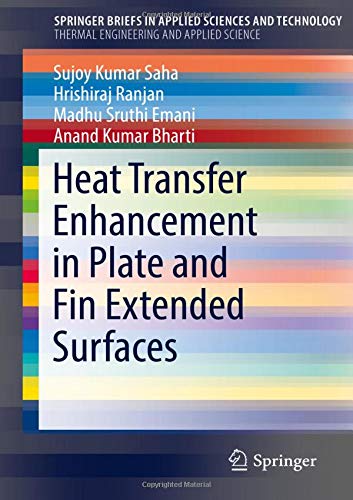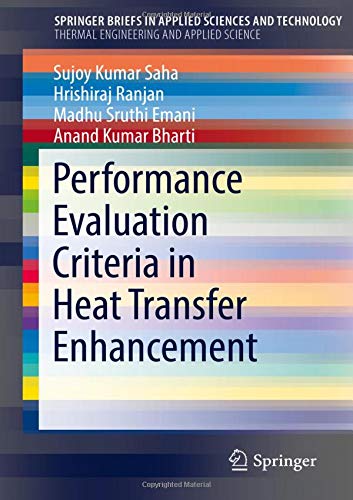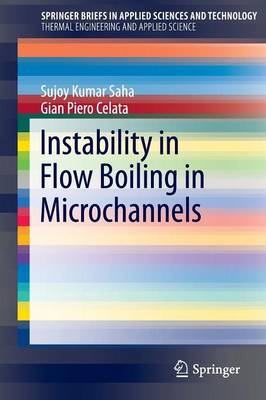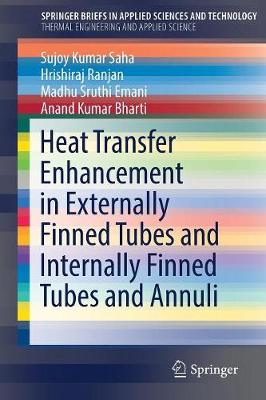SpringerBriefs in Applied Sciences and Technology
8 total works
Introduction to Enhanced Heat Transfer
by Sujoy Kumar Saha, Hrishiraj Ranjan, Madhu Sruthi Emani, and Anand Kumar Bharti
This Brief stands as a primer for heat transfer fundamentals in heat transfer enhancement devices, the definition of heat transfer area, passive and active enhancement techniques and their potential and benefits and commercial applications. It further examines techniques and modes of heat transfer like single-phase flow and two-phase flow, natural and forced convection, radiation heat transfer and convective mass transfer.
Critical Heat Flux in Flow Boiling in Microchannels
by Sujoy Kumar Saha and Gian Piero Celata
Heat Transfer and Pressure Drop in Flow Boiling in Microchannels
by Sujoy Kumar Saha and Gian Piero Celata
Heat Transfer Enhancement in Plate and Fin Extended Surfaces
by Sujoy Kumar Saha, Hrishiraj Ranjan, Madhu Sruthi Emani, and Anand Kumar Bharti
This Brief deals with heat transfer and friction in plate and fin extended heat transfer enhancement surfaces. It examines Offset-Strip Fin (OSF), Enhancement Principle, Analytically Based Models for j and f vs. Re, Transition from Laminar to Turbulent Region, Correlations for j and f vs. Re, Use of OSF with Liquids, Effect of Percent Fin Offset, Effect of Burred Edges, Louver fin, heat transfer and friction correlations, flow structure in the louver fin array, analytical model for heat transfer and friction, convex louver fin, wavy fin, 3D corrugated fin, perforated fin, pin fins and wire mesh, types of vortex generators, metal foam fin, plain fin, packings, numerical simulation of various types of fins.
Performance Evaluation Criteria in Heat Transfer Enhancement
by Sujoy Kumar Saha, Hrishiraj Ranjan, Madhu Sruthi Emani, and Anand Kumar Bharti
Instability in Flow Boiling in Microchannels
by Sujoy Kumar Saha and Gian Piero Celata
Two-Phase Heat Transfer Enhancement
by Sujoy Kumar Saha, Hrishiraj Ranjan, Madhu Sruthi Emani, and Anand Kumar Bharti
This Brief concerns heat transfer and pressure drop in heat transfer enhancement for boiling and condensation. The authors divide their topic into six areas: abrasive treatment and coatings, combined structured and porous surfaces, basic principles of boiling mechanism, vapor space condensation, convective vaporization, and forced condensation inside tubes. Within this framework, the book examines range of specific phenomena including abrasive treatment, open grooves, 3D cavities, etched surfaces, electroplating, pierced 3D cover sheets, attached wire and screen promoters, non-wetting coatings, oxide and ceramic coatings, porous surfaces, structured surfaces (integral roughness), combined structured and porous surfaces, composite surfaces, single-tube pool boiling tests, theoretical fundamentals like liquid superheat, effect of cavity shape and contact angle on superheat, entrapment of vapor in cavities, nucleation at a surface cavity, effect of dissolved gases, bubble departure diameter, bubble dynamics, boiling hysteresis and orientation effects, basic principles of boiling mechanism, visualization and mechanism of boiling in subsurface tunnels, and Chien and Webb parametric boiling studies.
